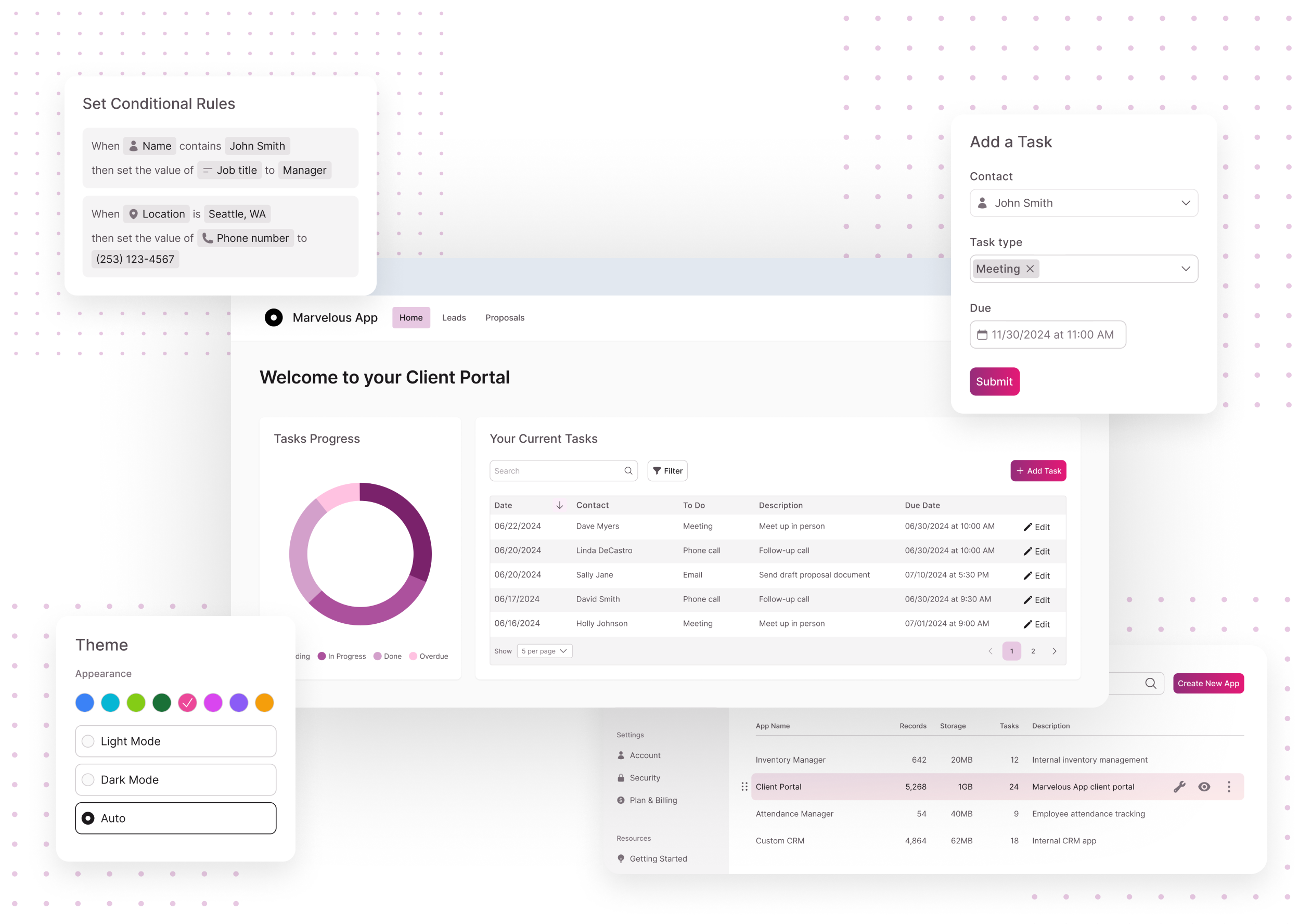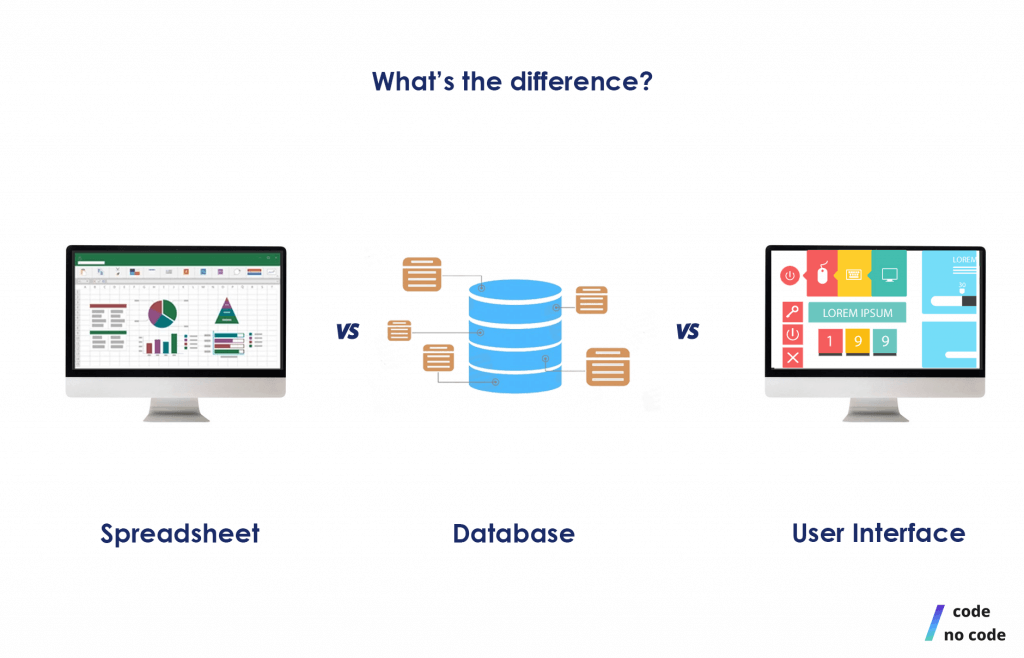Just How No-Code Devices Simplify Open System Database Development for Everyone
A Comprehensive Guide to Applying Scalable Data Sources Without the Demand for Coding Experience
In the modern landscape of information administration, the ability to apply scalable databases without coding know-how is becoming progressively necessary for organizations of all dimensions. What are the essential elements that can really equip these customers to utilize scalable databases properly?
Comprehending Scalable Databases
In the realm of modern-day data administration, scalable data sources have arised as a vital remedy for companies seeking to manage raising volumes of information effectively. These data sources are designed to fit development by enabling the smooth enhancement of resources, whether via horizontal scaling (including a lot more makers) or upright scaling (updating existing devices) This adaptability is necessary in today's hectic digital landscape, where information is created at an unprecedented price.
Scalable data sources generally utilize dispersed styles, which enable information to be spread throughout several nodes. This distribution not only enhances performance yet additionally gives redundancy, making certain data availability even in the event of equipment failings. Scalability can be an important aspect for various applications, including e-commerce systems, social media networks, and big information analytics, where individual need can change dramatically.
Furthermore, scalable data sources usually include durable data uniformity models that stabilize performance and dependability. Organizations must consider their particular requirements, such as read and write speeds, data stability, and fault tolerance when choosing a scalable data source solution. Ultimately, recognizing the underlying concepts of scalable databases is essential for businesses intending to grow in a significantly data-driven globe.
Trick Functions to Try To Find
When examining scalable databases, numerous crucial attributes are extremely important to making certain optimal efficiency and reliability. Most importantly, think about the style of the database. A dispersed style can enhance scalability by allowing information to be saved across several nodes, facilitating smooth data accessibility and handling as need increases.
An additional crucial attribute is data partitioning, which makes it possible for reliable monitoring of large datasets by dividing them into smaller, extra manageable pieces (no-code). This approach not just improves performance yet also streamlines source appropriation
Additionally, search for robust duplication abilities. This feature ensures information redundancy and high availability, reducing downtime during maintenance or unanticipated failures.
Performance surveillance devices are additionally essential, as they give real-time understandings into system health and functional performance, allowing for timely modifications to maintain ideal performance.

User-Friendly Data Source Devices
Simplicity is a crucial component in the design of easy to use data source devices, as it improves accessibility for individuals with differing degrees of technological competence. no-code. These tools prioritize instinctive interfaces, allowing customers to produce, take care of, and question databases without needing substantial programs knowledge
Trick attributes normally include drag-and-drop capability, visual information modeling, and pre-built layouts that streamline the arrangement procedure. Such tools typically use assisted tutorials or onboarding procedures that promote individual involvement and reduce the discovering curve. Additionally, seamless integration with prominent data sources and services ensures that customers can quickly import and export information, even more streamlining operations.

Additionally, robust support and area resources, such as forums and documents, improve the individual experience by supplying support when needed. On the whole, easy to use database tools encourage companies to harness the power of scalable data sources, making data monitoring easily accessible to everyone entailed.
Step-by-Step Implementation Overview
How can organizations efficiently apply scalable data sources to meet their growing data needs? The procedure begins with determining specific data demands, including the quantity, variety, and velocity of data that will certainly be processed. Next, organizations must review easy to use database tools that use scalability attributes, such as cloud-based services or managed data source solutions.
As soon as the ideal device is chosen, the next step includes setting up the database environment. This consists of establishing instances, specifying individual consents, and establishing information frameworks that align with company goals. Organizations should then migrate existing data right into the brand-new system, making certain information stability and minimal disruption to operations.
Post-migration, carrying out comprehensive screening is crucial; this consists of efficiency screening under various load conditions to guarantee the system can manage future development - no-code. In addition, it is necessary to educate personnel on the data source monitoring user interface to assist in smooth usage
Best Practices for Management
Effective management of scalable databases calls for a strategic approach that prioritizes continuous monitoring and optimization. To achieve this, organizations should apply robust surveillance tools that supply Visit This Link real-time understandings into database performance metrics, such as question feedback times, source usage, and transaction throughput. Routinely evaluating these metrics can help identify bottlenecks and areas for renovation.

Normal backups and catastrophe healing plans are vital to guard information stability and schedule. Establishing a routine for testing these backups will guarantee a reputable recovery procedure in situation of an unexpected failure.
In addition, performance adjusting need to be a continual process. Readjusting indexing techniques, maximizing queries, and scaling resourcesâEUR" whether vertically or horizontallyâEUR" will assist maintain ideal performance as use needs progress.
Last but not least, promoting a culture of expertise sharing amongst group participants will certainly make it possible for constant understanding and adjustment, guaranteeing that the monitoring of scalable data sources remains reliable and reliable in time.
Conclusion
In verdict, the implementation of scalable databases can be effectively achieved without coding proficiency through the utilization of intuitive interfaces and user-friendly try this website devices. By sticking to the described approaches for configuration, data migration, and performance screening, people can browse the intricacies of database management easily. Highlighting best techniques for recurring maintenance and partnership further boosts the capability to handle scalable data sources successfully in a rapidly developing data-driven environment.
In the modern landscape of information management, the ability to execute scalable data sources without coding expertise is becoming progressively necessary for companies of all sizes.In the realm of modern-day data monitoring, scalable data sources have arised as a critical option for organizations looking for to manage increasing volumes of info efficiently.In addition, scalable data sources typically feature durable data consistency versions try these out that stabilize performance and reliability.Exactly how can organizations successfully apply scalable databases to satisfy their expanding data needs? Next, companies should examine straightforward database devices that provide scalability features, such as cloud-based remedies or managed data source solutions.